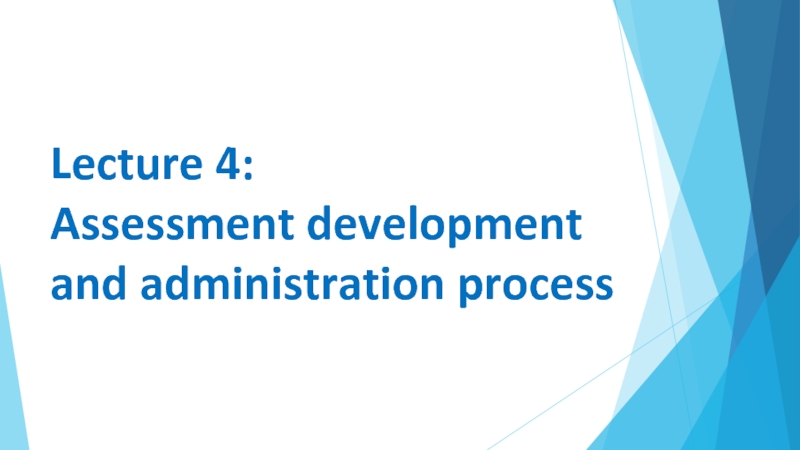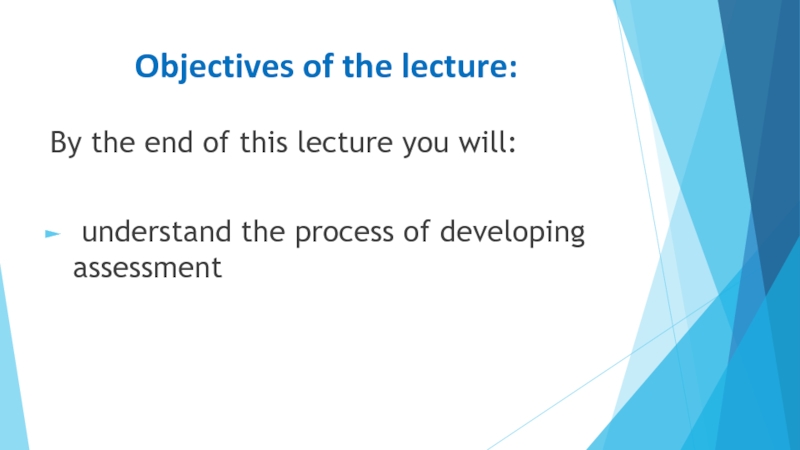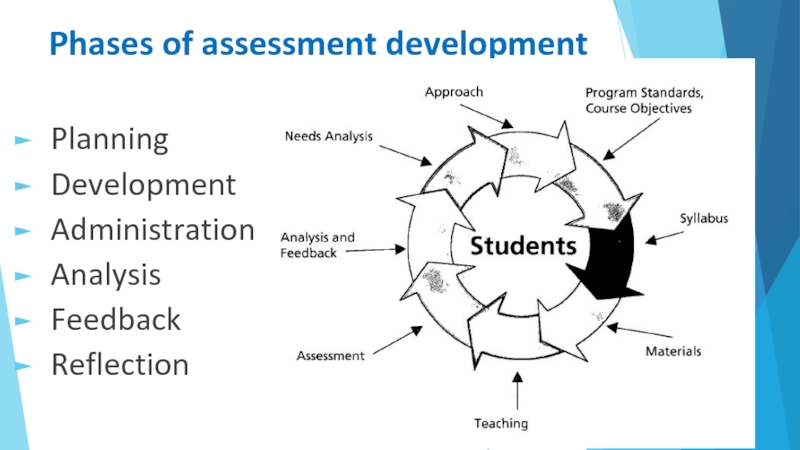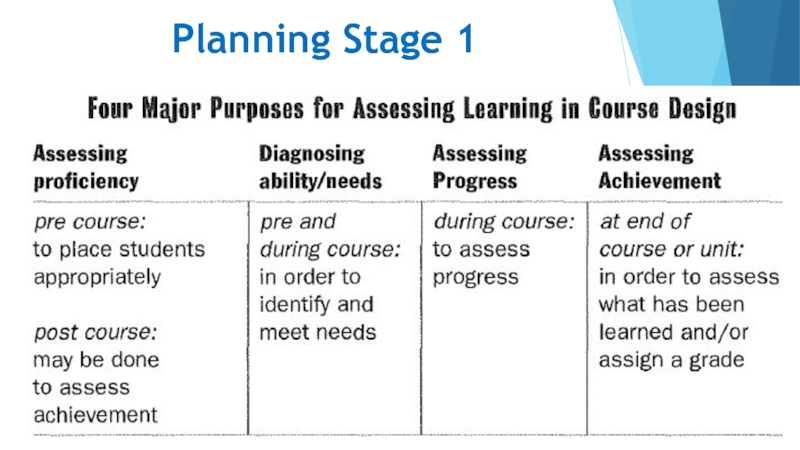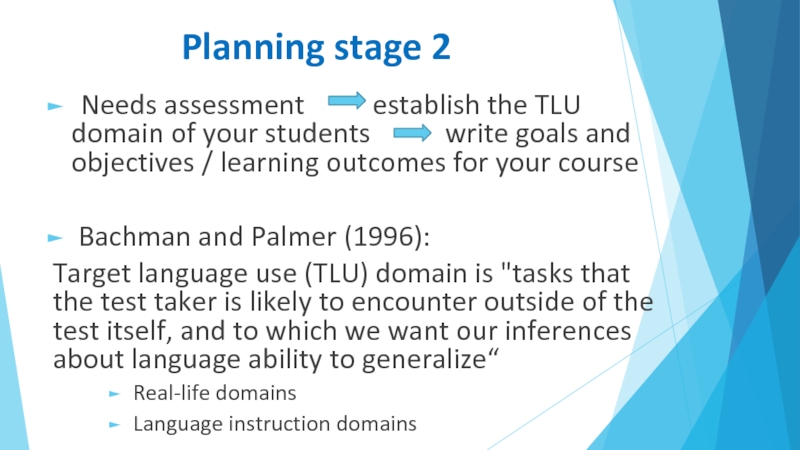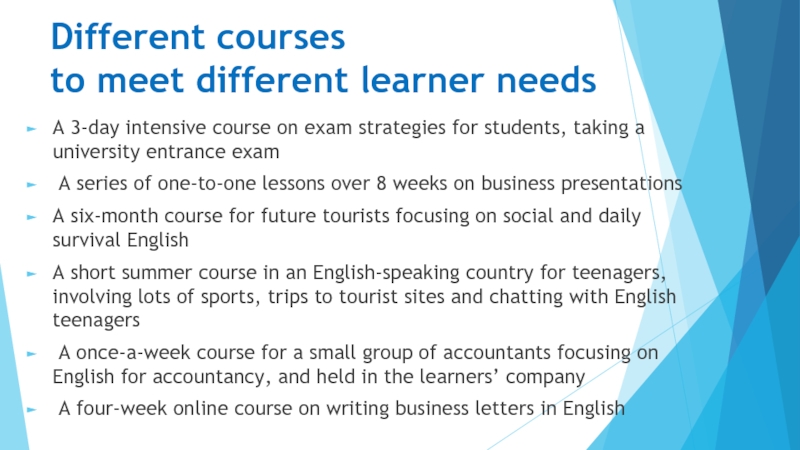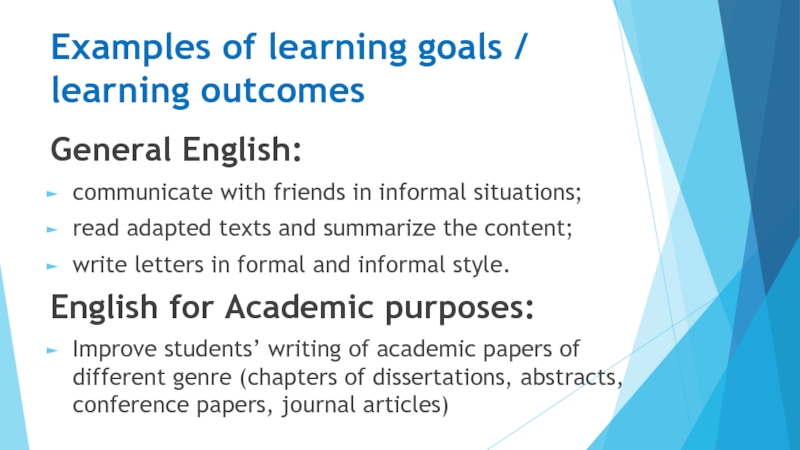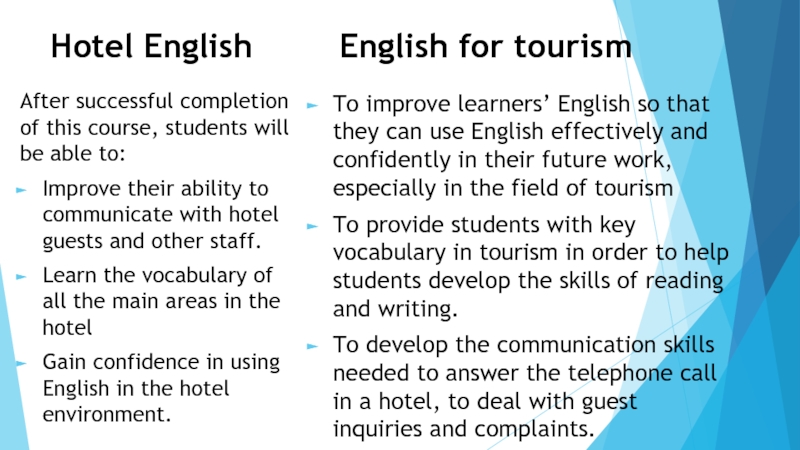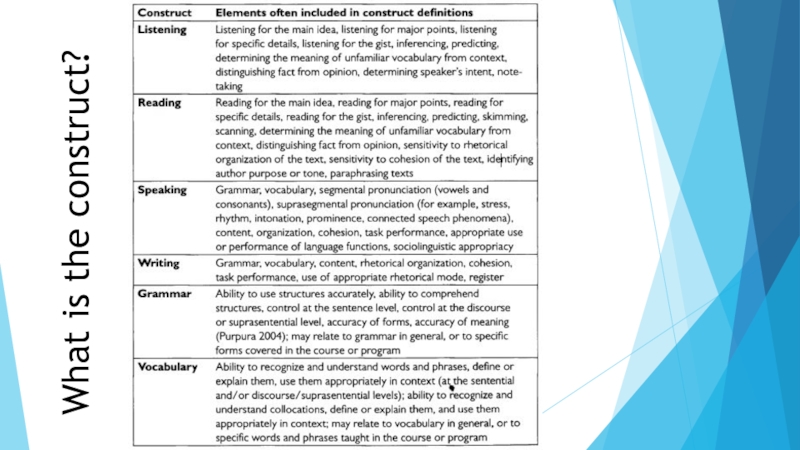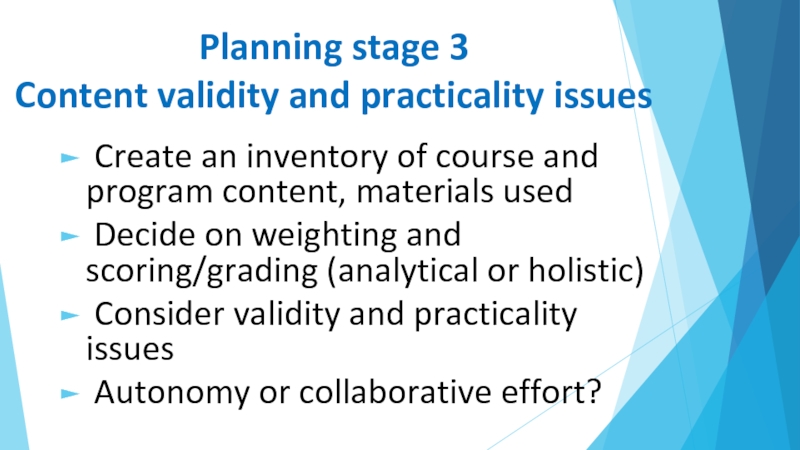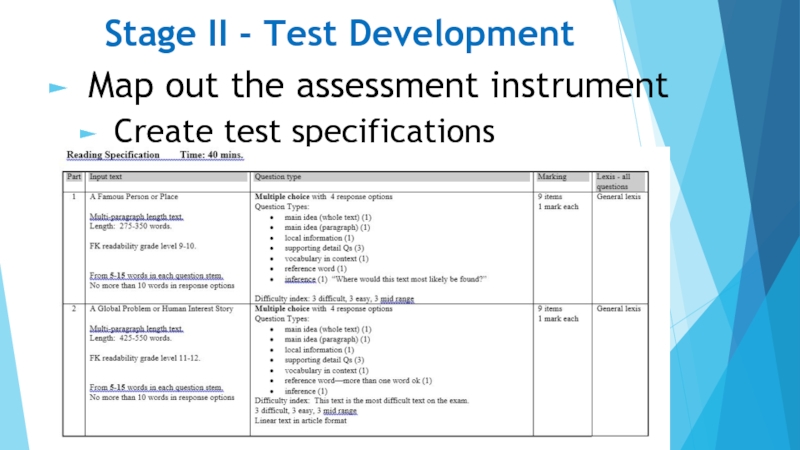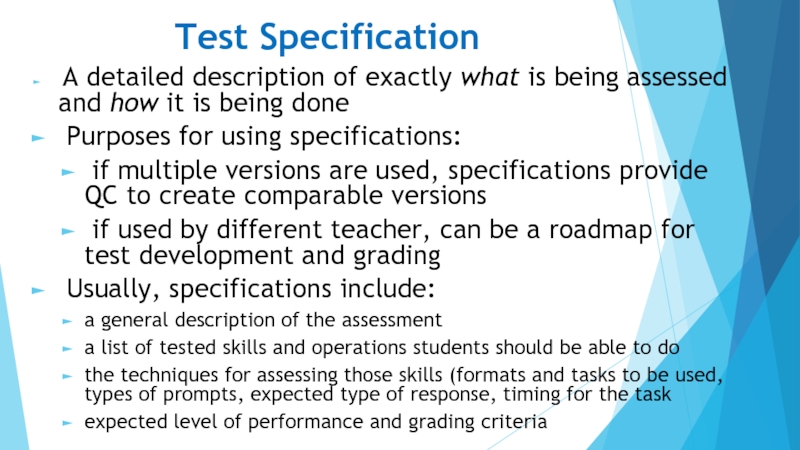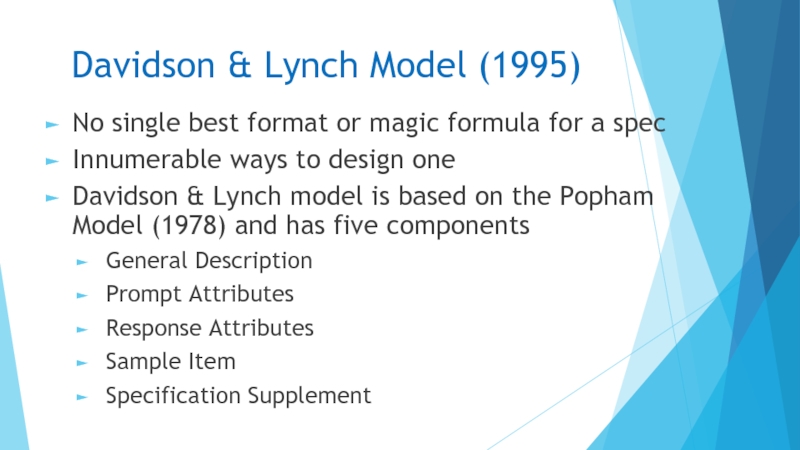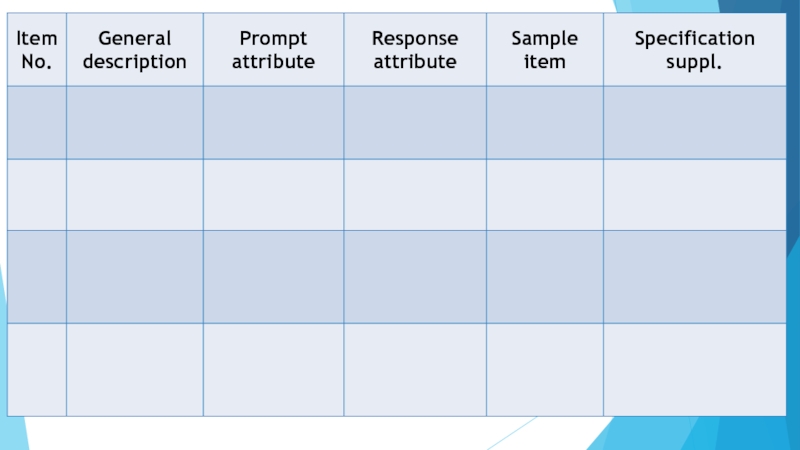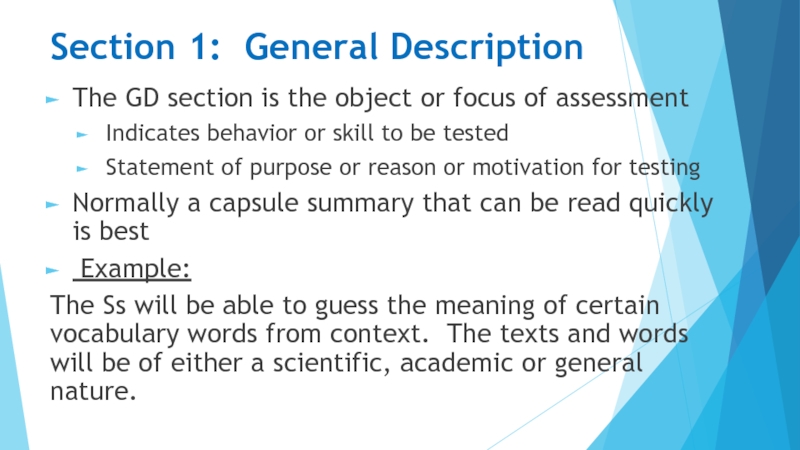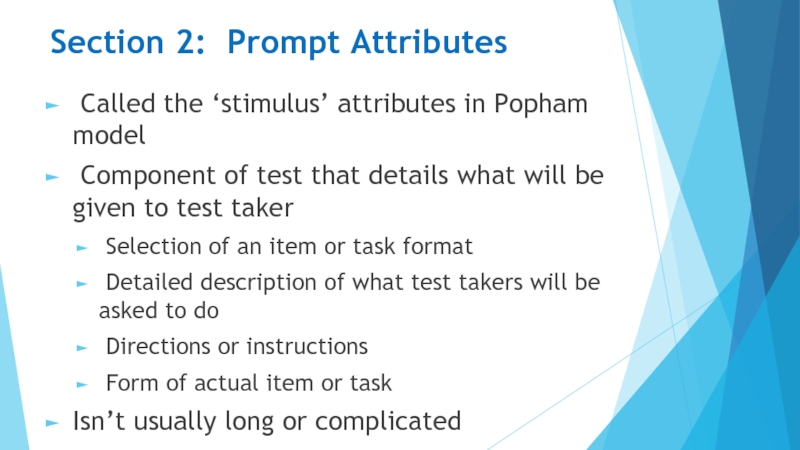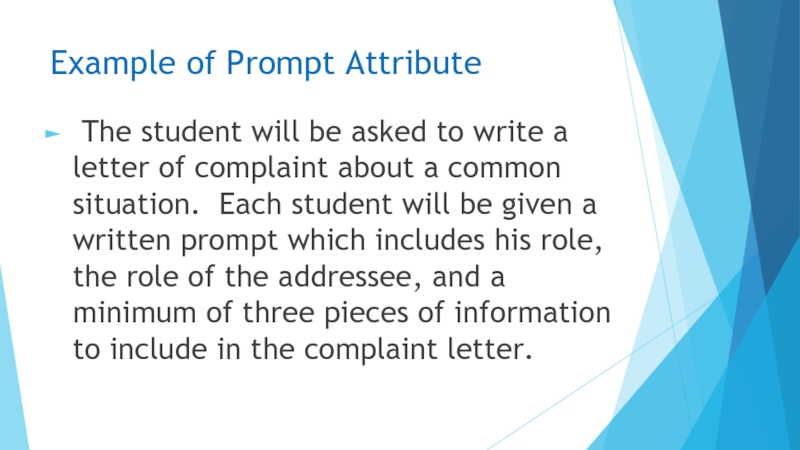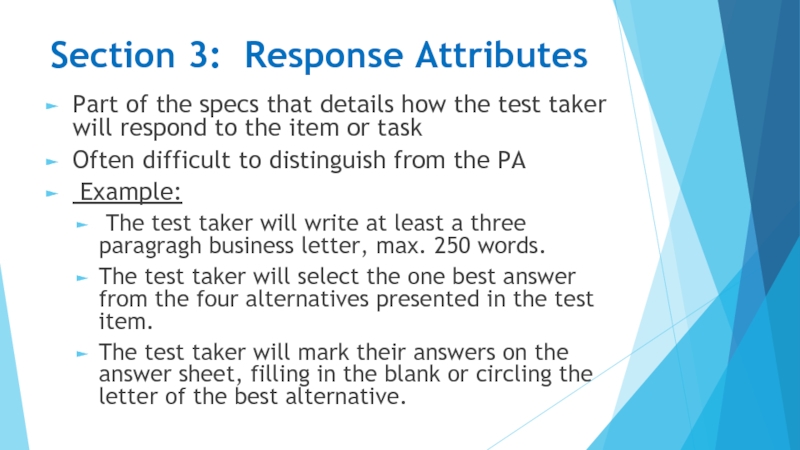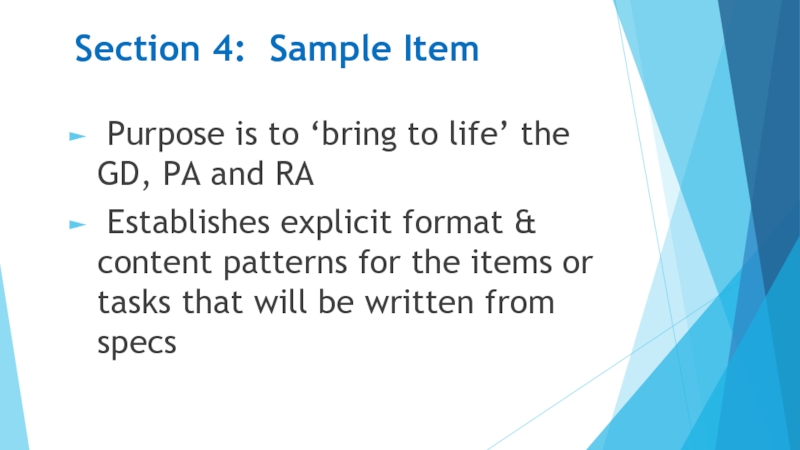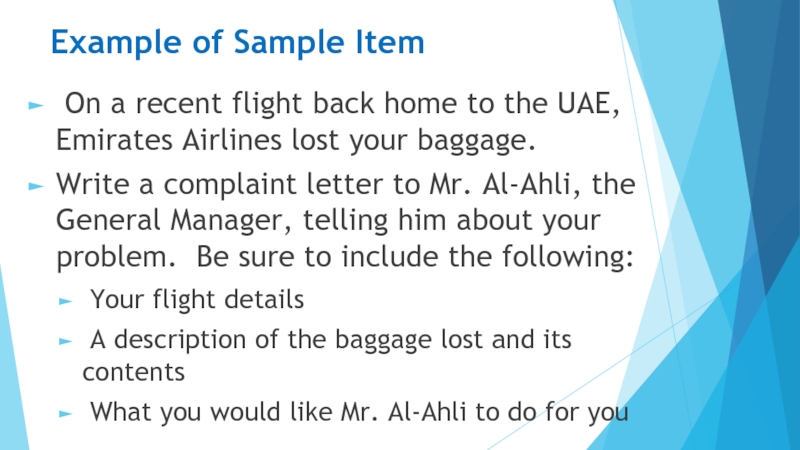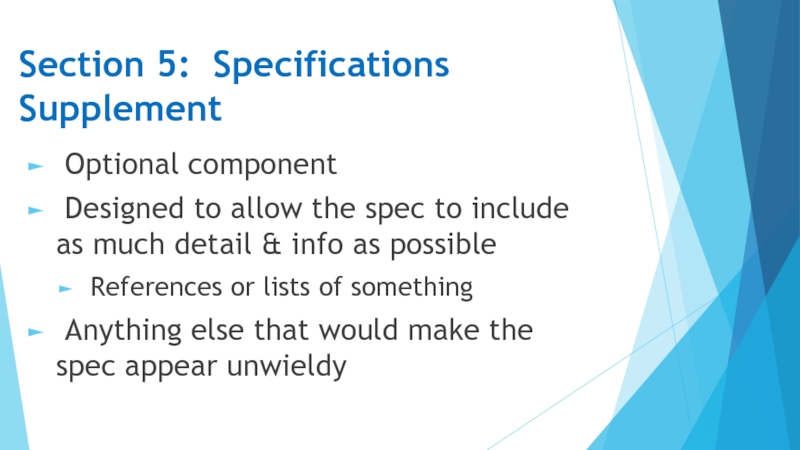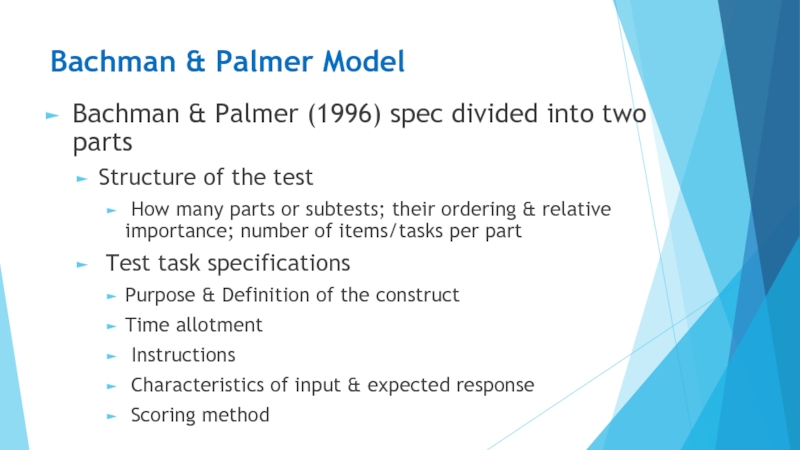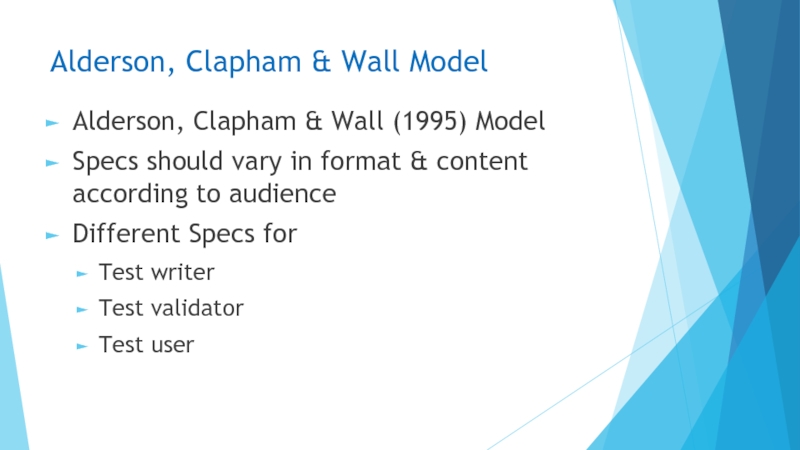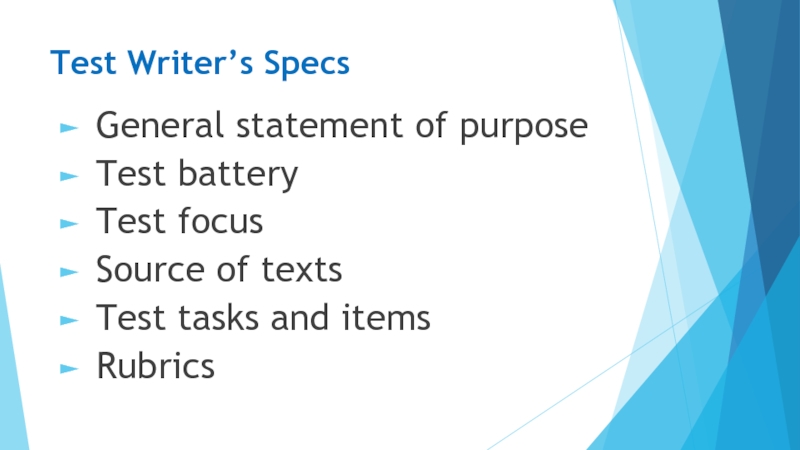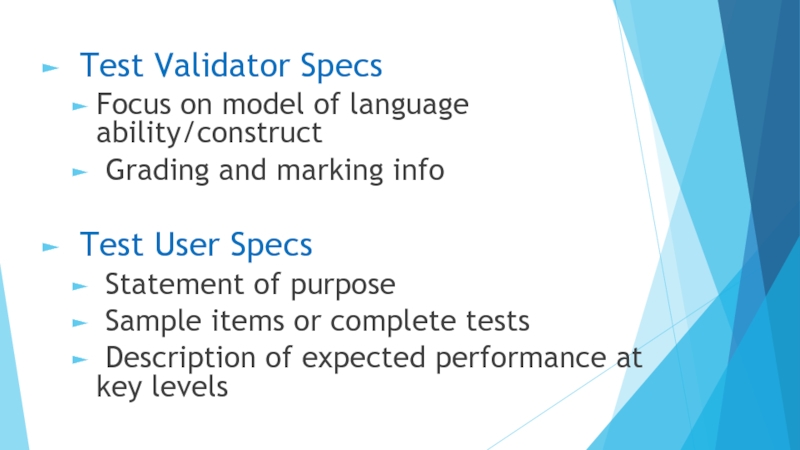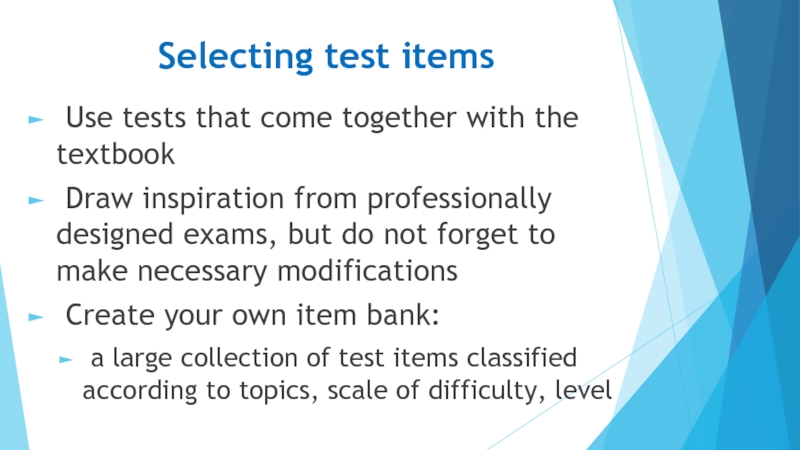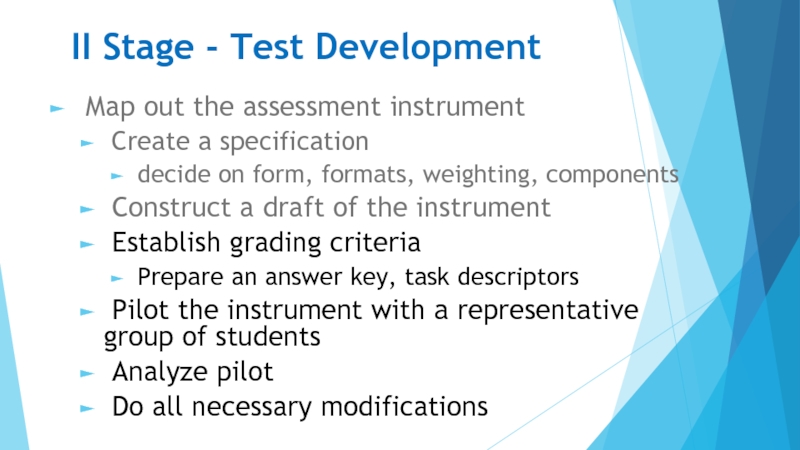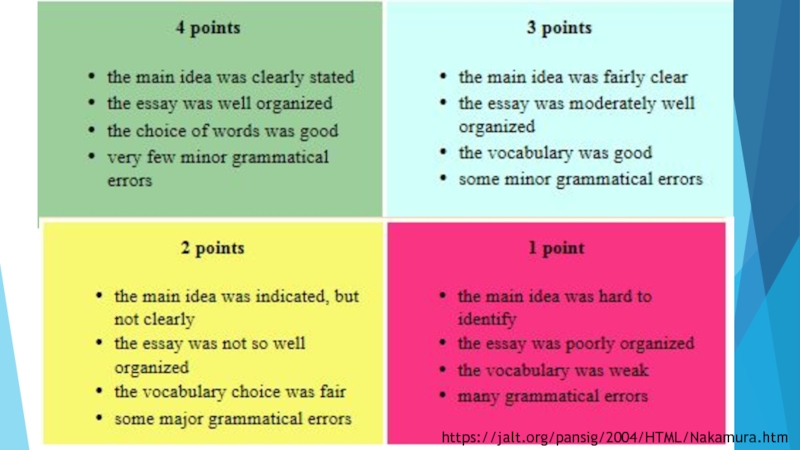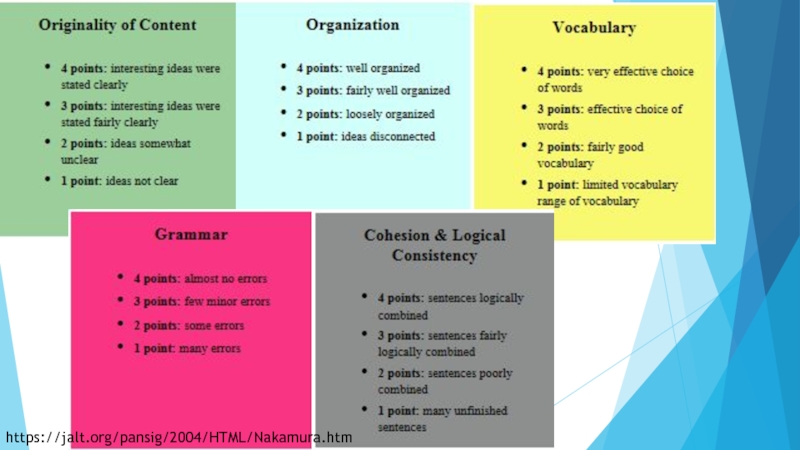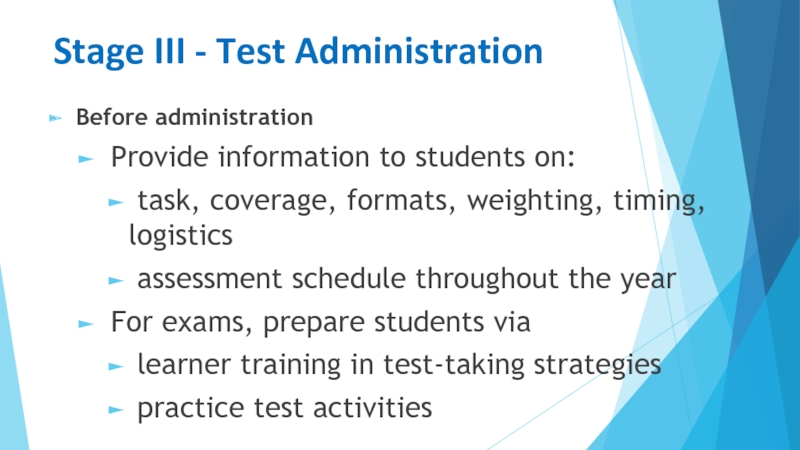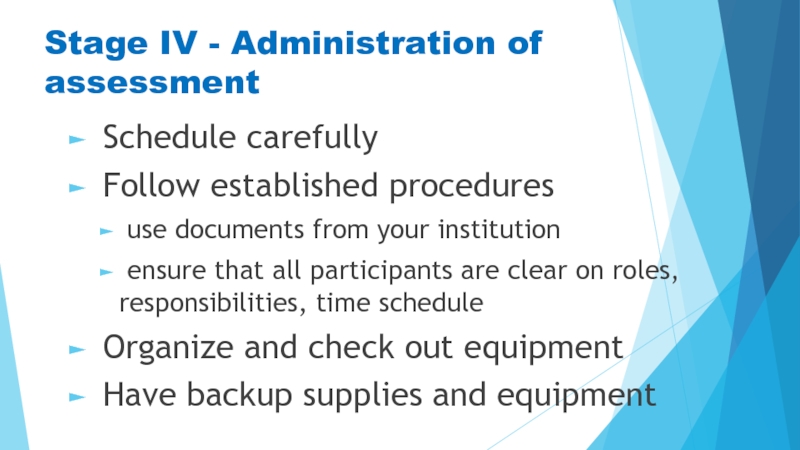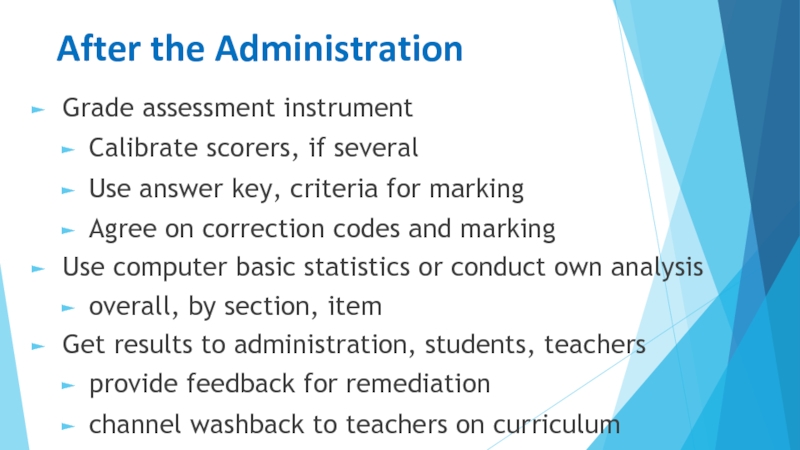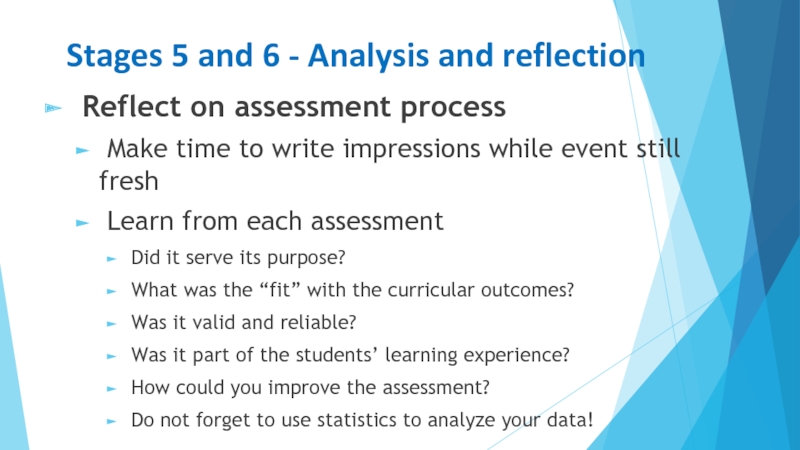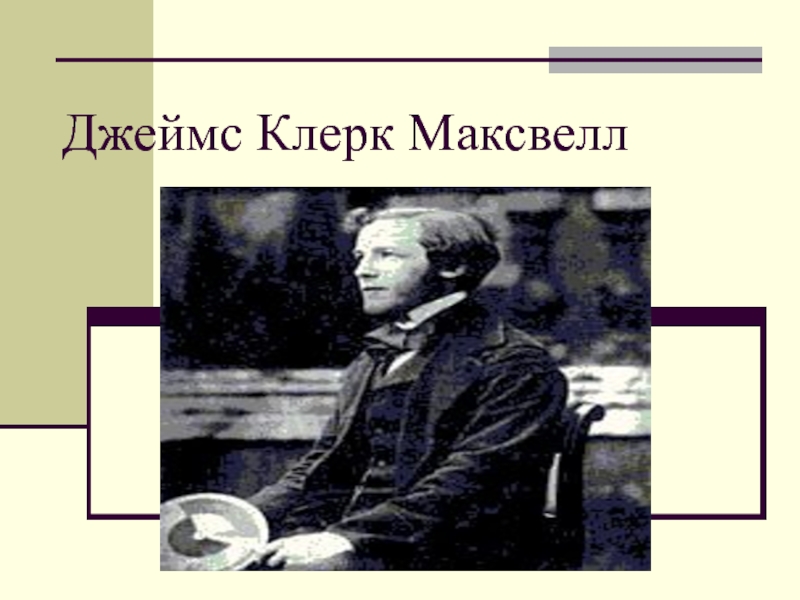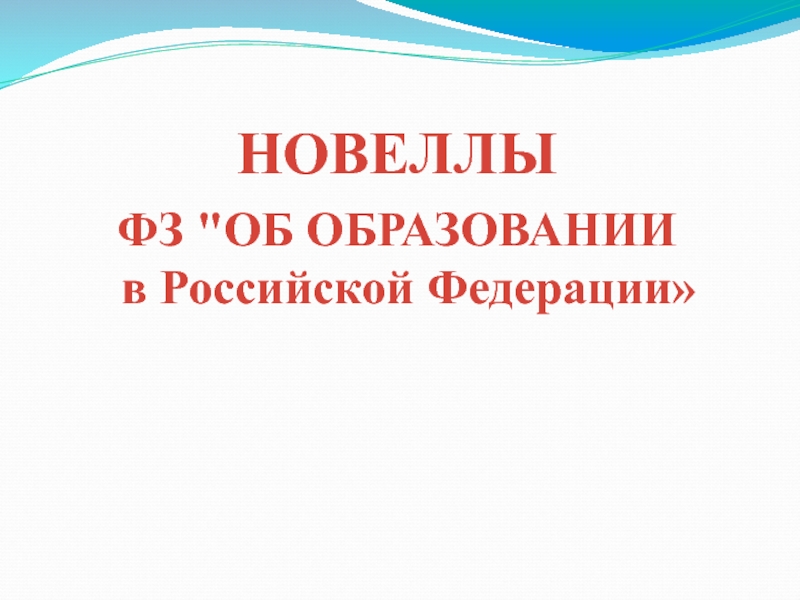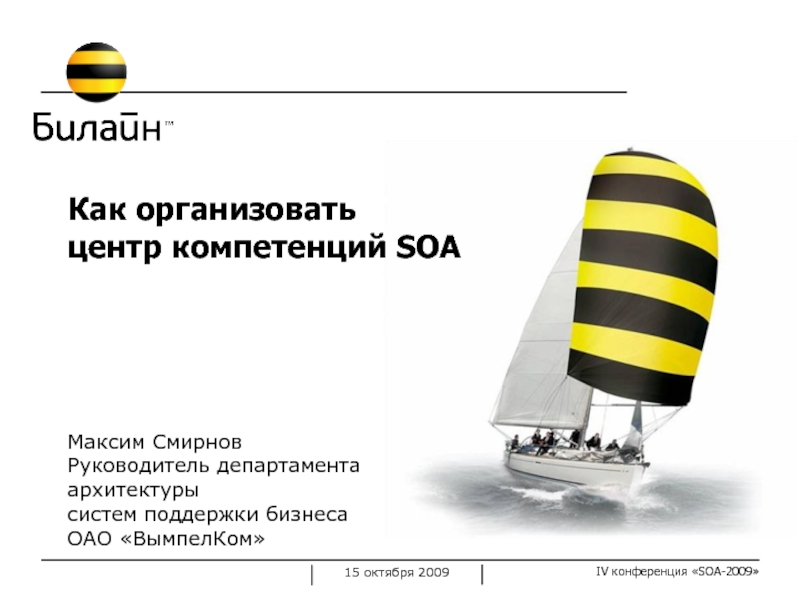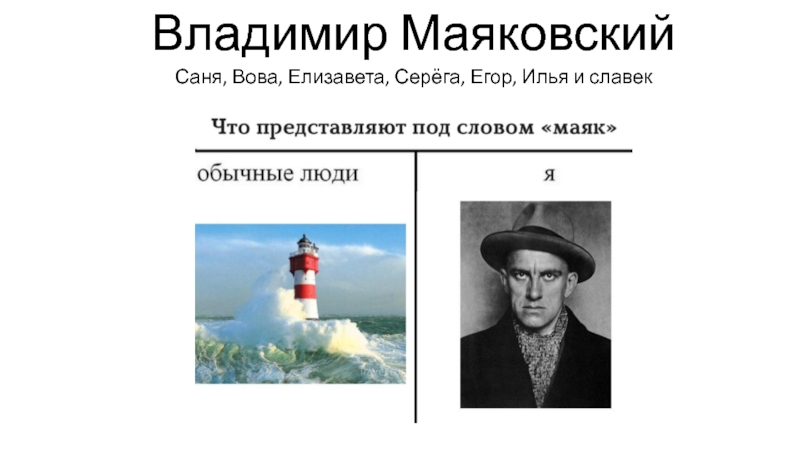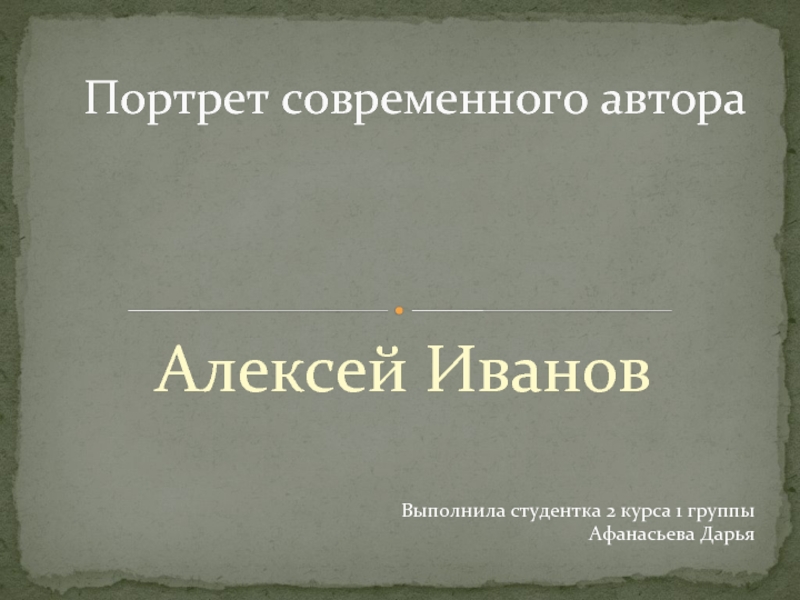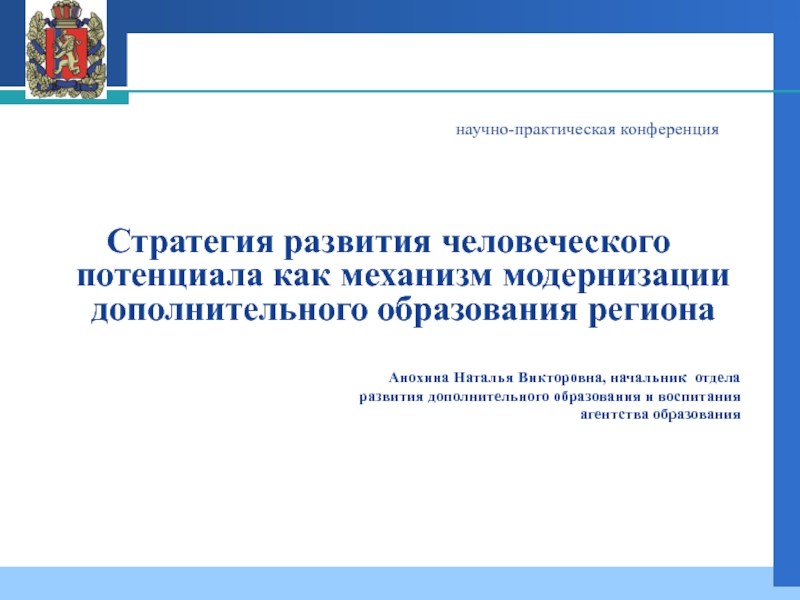- Главная
- Разное
- Дизайн
- Бизнес и предпринимательство
- Аналитика
- Образование
- Развлечения
- Красота и здоровье
- Финансы
- Государство
- Путешествия
- Спорт
- Недвижимость
- Армия
- Графика
- Культурология
- Еда и кулинария
- Лингвистика
- Английский язык
- Астрономия
- Алгебра
- Биология
- География
- Детские презентации
- Информатика
- История
- Литература
- Маркетинг
- Математика
- Медицина
- Менеджмент
- Музыка
- МХК
- Немецкий язык
- ОБЖ
- Обществознание
- Окружающий мир
- Педагогика
- Русский язык
- Технология
- Физика
- Философия
- Химия
- Шаблоны, картинки для презентаций
- Экология
- Экономика
- Юриспруденция
Assessment development and administration process презентация
Содержание
- 1. Assessment development and administration process
- 2. Objectives of the lecture: By the end
- 3. Phases of assessment development Planning
- 4. Planning Stage 1
- 5. Planning stage 2 Needs assessment
- 6. Different courses to meet different learner
- 7. Examples of learning goals / learning outcomes
- 8. Hotel English After successful completion of
- 9. What is the construct?
- 10. Planning stage 3 Content validity and practicality
- 11. Stage II - Test Development Map
- 12. Test Specification A detailed description of
- 13. Davidson & Lynch Model (1995) No single
- 15. Section 1: General Description The GD section
- 16. Section 2: Prompt Attributes Called the
- 17. Example of Prompt Attribute The student
- 18. Section 3: Response Attributes Part of the
- 19. Section 4: Sample Item Purpose is
- 20. Example of Sample Item On a
- 21. Section 5: Specifications Supplement Optional component
- 22. Bachman & Palmer Model Bachman & Palmer
- 23. Alderson, Clapham & Wall Model Alderson, Clapham
- 24. Test Writer’s Specs General statement of
- 25. Test Validator Specs Focus on model
- 26. Selecting test items Use tests that
- 27. II Stage - Test Development
- 28. https://jalt.org/pansig/2004/HTML/Nakamura.htm
- 29. https://jalt.org/pansig/2004/HTML/Nakamura.htm
- 30. Stage III - Test Administration Before administration
- 31. Stage IV - Administration of assessment
- 32. After the Administration Grade assessment instrument
- 33. Stages 5 and 6 - Analysis and
Слайд 2Objectives of the lecture:
By the end of this lecture you will:
understand the process of developing assessment
Слайд 3Phases of assessment development
Planning
Development
Administration
Analysis
Feedback
Reflection
Слайд 5Planning stage 2
Needs assessment establish the
Bachman and Palmer (1996):
Target language use (TLU) domain is "tasks that the test taker is likely to encounter outside of the test itself, and to which we want our inferences about language ability to generalize“
Real-life domains
Language instruction domains
Слайд 6Different courses
to meet different learner needs
A 3-day intensive course on
A series of one-to-one lessons over 8 weeks on business presentations
A six-month course for future tourists focusing on social and daily survival English
A short summer course in an English-speaking country for teenagers, involving lots of sports, trips to tourist sites and chatting with English teenagers
A once-a-week course for a small group of accountants focusing on English for accountancy, and held in the learners’ company
A four-week online course on writing business letters in English
Слайд 7Examples of learning goals / learning outcomes
General English:
communicate with friends
read adapted texts and summarize the content;
write letters in formal and informal style.
English for Academic purposes:
Improve students’ writing of academic papers of different genre (chapters of dissertations, abstracts, conference papers, journal articles)
Слайд 8
Hotel English
After successful completion of this course, students will be able
Improve their ability to communicate with hotel guests and other staff.
Learn the vocabulary of all the main areas in the hotel
Gain confidence in using English in the hotel environment.
English for tourism
To improve learners’ English so that they can use English effectively and confidently in their future work, especially in the field of tourism
To provide students with key vocabulary in tourism in order to help students develop the skills of reading and writing.
To develop the communication skills needed to answer the telephone call in a hotel, to deal with guest inquiries and complaints.
Слайд 10Planning stage 3
Content validity and practicality issues
Create an inventory of
Decide on weighting and scoring/grading (analytical or holistic)
Consider validity and practicality issues
Autonomy or collaborative effort?
Слайд 12Test Specification
A detailed description of exactly what is being assessed
Purposes for using specifications:
if multiple versions are used, specifications provide QC to create comparable versions
if used by different teacher, can be a roadmap for test development and grading
Usually, specifications include:
a general description of the assessment
a list of tested skills and operations students should be able to do
the techniques for assessing those skills (formats and tasks to be used, types of prompts, expected type of response, timing for the task
expected level of performance and grading criteria
Слайд 13Davidson & Lynch Model (1995)
No single best format or magic formula
Innumerable ways to design one
Davidson & Lynch model is based on the Popham Model (1978) and has five components
General Description
Prompt Attributes
Response Attributes
Sample Item
Specification Supplement
Слайд 15Section 1: General Description
The GD section is the object or focus
Indicates behavior or skill to be tested
Statement of purpose or reason or motivation for testing
Normally a capsule summary that can be read quickly is best
Example:
The Ss will be able to guess the meaning of certain vocabulary words from context. The texts and words will be of either a scientific, academic or general nature.
Слайд 16Section 2: Prompt Attributes
Called the ‘stimulus’ attributes in Popham model
Selection of an item or task format
Detailed description of what test takers will be asked to do
Directions or instructions
Form of actual item or task
Isn’t usually long or complicated
Слайд 17Example of Prompt Attribute
The student will be asked to write
Слайд 18Section 3: Response Attributes
Part of the specs that details how the
Often difficult to distinguish from the PA
Example:
The test taker will write at least a three paragragh business letter, max. 250 words.
The test taker will select the one best answer from the four alternatives presented in the test item.
The test taker will mark their answers on the answer sheet, filling in the blank or circling the letter of the best alternative.
Слайд 19Section 4: Sample Item
Purpose is to ‘bring to life’ the
Establishes explicit format & content patterns for the items or tasks that will be written from specs
Слайд 20Example of Sample Item
On a recent flight back home to
Write a complaint letter to Mr. Al-Ahli, the General Manager, telling him about your problem. Be sure to include the following:
Your flight details
A description of the baggage lost and its contents
What you would like Mr. Al-Ahli to do for you
Слайд 21Section 5: Specifications Supplement
Optional component
Designed to allow the spec
References or lists of something
Anything else that would make the spec appear unwieldy
Слайд 22Bachman & Palmer Model
Bachman & Palmer (1996) spec divided into two
Structure of the test
How many parts or subtests; their ordering & relative importance; number of items/tasks per part
Test task specifications
Purpose & Definition of the construct
Time allotment
Instructions
Characteristics of input & expected response
Scoring method
Слайд 23Alderson, Clapham & Wall Model
Alderson, Clapham & Wall (1995) Model
Specs should
Different Specs for
Test writer
Test validator
Test user
Слайд 24Test Writer’s Specs
General statement of purpose
Test battery
Test focus
Test tasks and items
Rubrics
Слайд 25 Test Validator Specs
Focus on model of language ability/construct
Grading and
Test User Specs
Statement of purpose
Sample items or complete tests
Description of expected performance at key levels
Слайд 26Selecting test items
Use tests that come together with the textbook
Create your own item bank:
a large collection of test items classified according to topics, scale of difficulty, level
Слайд 27II Stage - Test Development
Map out the assessment instrument
decide on form, formats, weighting, components
Construct a draft of the instrument
Establish grading criteria
Prepare an answer key, task descriptors
Pilot the instrument with a representative group of students
Analyze pilot
Do all necessary modifications
Слайд 30Stage III - Test Administration
Before administration
Provide information to students on:
assessment schedule throughout the year
For exams, prepare students via
learner training in test-taking strategies
practice test activities
Слайд 31Stage IV - Administration of assessment
Schedule carefully
Follow established procedures
ensure that all participants are clear on roles, responsibilities, time schedule
Organize and check out equipment
Have backup supplies and equipment
Слайд 32After the Administration
Grade assessment instrument
Calibrate scorers, if several
Use
Agree on correction codes and marking
Use computer basic statistics or conduct own analysis
overall, by section, item
Get results to administration, students, teachers
provide feedback for remediation
channel washback to teachers on curriculum
Слайд 33Stages 5 and 6 - Analysis and reflection
Reflect on assessment
Make time to write impressions while event still fresh
Learn from each assessment
Did it serve its purpose?
What was the “fit” with the curricular outcomes?
Was it valid and reliable?
Was it part of the students’ learning experience?
How could you improve the assessment?
Do not forget to use statistics to analyze your data!
